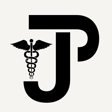
Episode 4: Lungs and Thorax
Here is a brief review guide to assessment of the lungs and thorax including inspection, palpation, percussion and auscultation. Below is a link to the sources used to form this podcast as well as to a youtube video you may find helpful in learning lung sounds.
(3) Name That Lung Sound Quiz | Normal and Abnormal lung sounds, types, #respiratory - YouTube
FB group: https://www.facebook.com/groups/1415202242471170/
Dains, J., Baumann, L., & Scheibel, P. (2024). Advanced health assessment and clinical diagnosis in primary care (7th ed.). Elsevier.
Bickley, L. S., Szilagyi, P. G., Hoffman, R. M., & Soriano, R. P. (2024). Bates’ Guide to Physical Examination and history taking. Wolters Kluwer.
Global Initiative for Asthma (GINA) Report: 2023 Update. Available at: GINA Asthma Management and Prevention
National Heart, Lung, and Blood Institute (NHLBI), National Asthma Education and Prevention Program Expert Panel Report 3: Guidelines for the Diagnosis and Management of Asthma. Available at: NHLBI Asthma Guidelines
Yawn, B.P., & Wollan, P.C. (2016). "Asthma characteristics, management, and outcomes in primary care: a report from ASPN." The Journal of Family Practice, 65(10), 699-706.
Global Initiative for Chronic Obstructive Lung Disease (GOLD) Report: 2023 Update. Available at: GOLD COPD Management Guidelines
National Institute for Health and Care Excellence (NICE) Guideline [NG115]: Chronic obstructive pulmonary disease in over 16s: diagnosis and management. Available at: NICE COPD Guidelines
Vestbo, J., et al. (2013). "Global strategy for the diagnosis, management, and prevention of chronic obstructive pulmonary disease: GOLD executive summary." American Journal of Respiratory and Critical Care Medicine, 187(4), 347-365.
Mandell, L.A., et al. (2019). "Infectious Diseases Society of America/American Thoracic Society Consensus Guidelines on the Management of Community-Acquired Pneumonia in Adults." Clinical Infectious Diseases, 44(S2), S27-S72.
National Institute for Health and Care Excellence (NICE) Guideline [NG138]: Pneumonia in adults: diagnosis and management. Available at: NICE Pneumonia Guidelines
Jain, S., et al. (2015). "Community-Acquired Pneumonia Requiring Hospitalization among U.S. Adults." New England Journal of Medicine, 373(5), 415-427.

